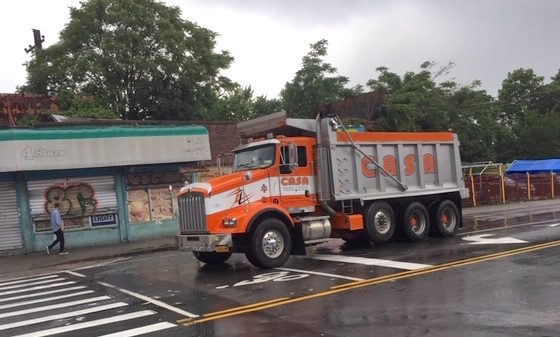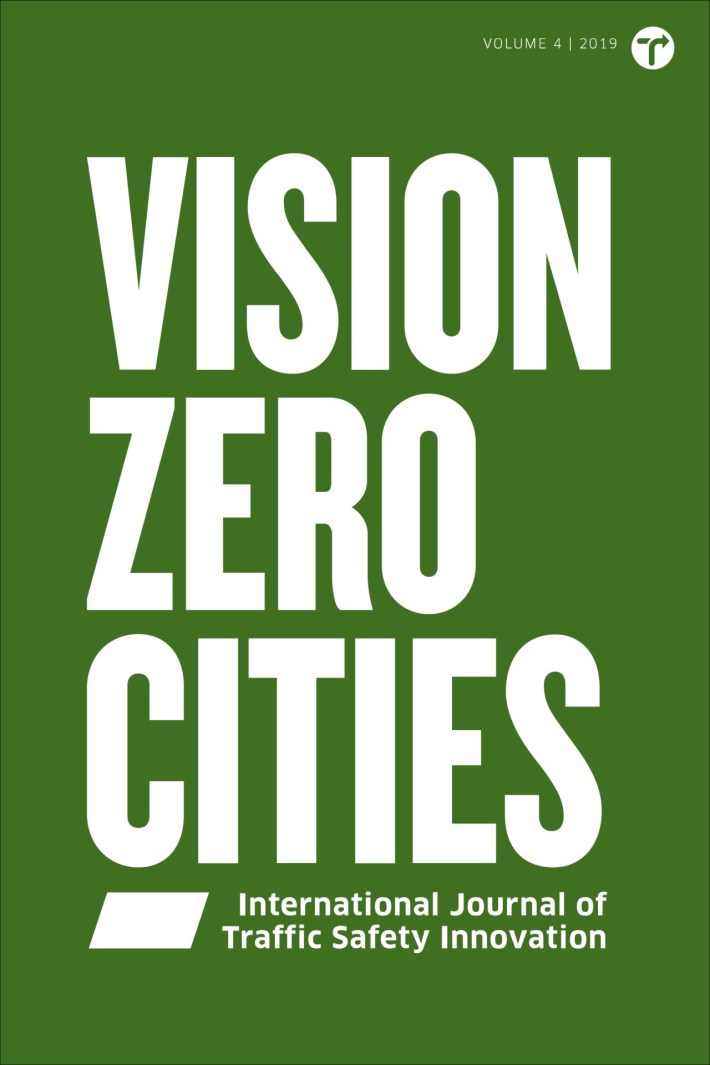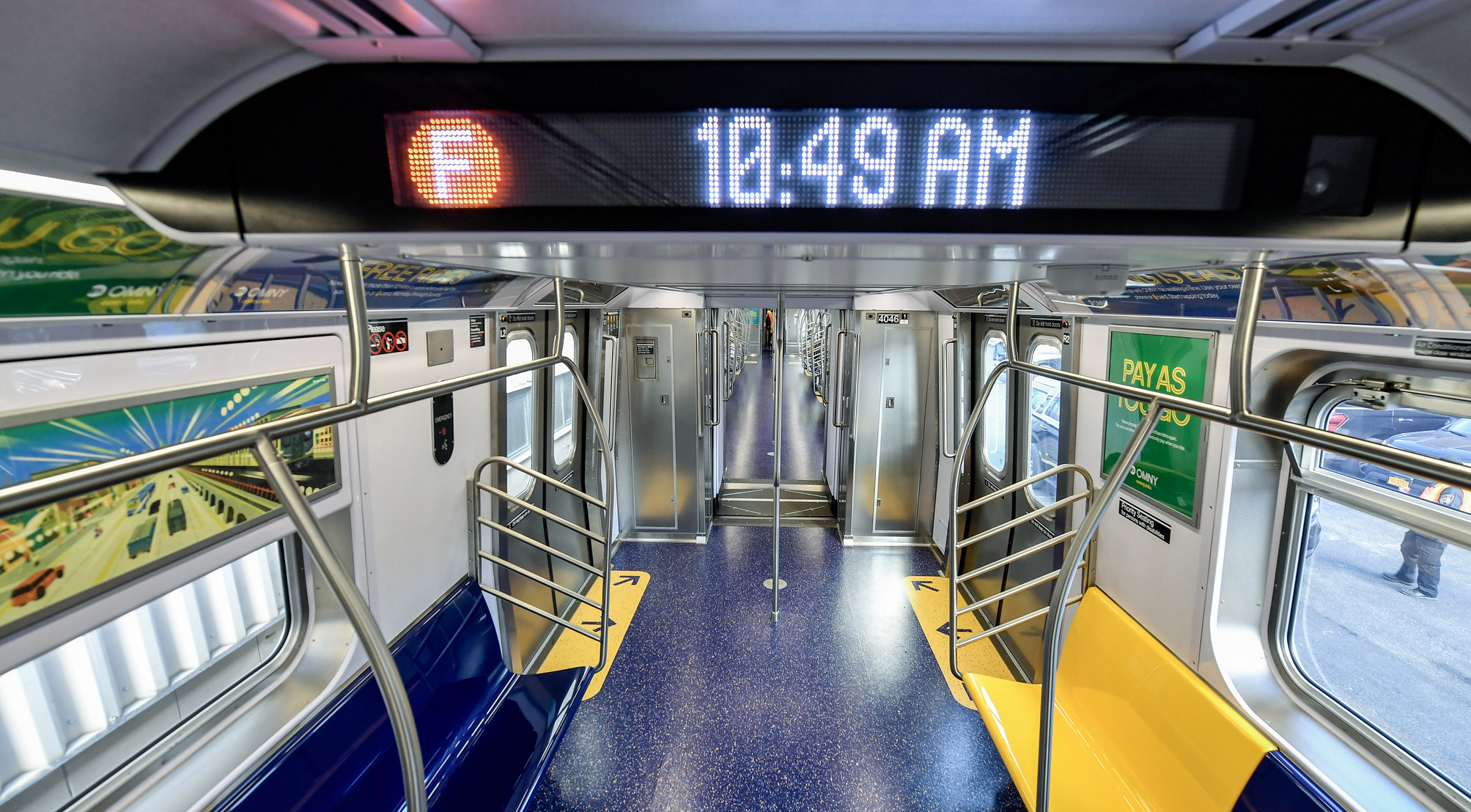Trucks are a “necessary evil” of urban life. They bring goods and services to New Yorkers — but also pose a disproportionate threat to people walking and biking: Almost half of cyclist fatalities in the city so far this year came from crashes with large vehicle operators — mostly trucks.
There are, however, some technological fixes for this problem. Many private-sector truck operators embrace a data-driven approach to safety and an operational philosophy of continuous improvement: Some 85 percent of large fleets use safety telematics, a widely available, satellite-based technology that can measure the behaviors that are most likely to contribute to crashes — such as speeding, aggressive driving and driver phone use — and can prevent injuries and fatalities.
The rub is that use of the technology varies. Only about half the fleets in the United States use telematics to measure driver performance, while only 30 percent of small fleets use it at all. And small fleets predominate: More than 60 percent of commercial fleets in North America have fewer than 100 vehicles; more than a million U.S. trucking companies field fewer than 20 vehicles, by some estimates. That’s true of the truck operators that killed the New Yorkers on bikes this year; many of the businesses involved probably don’t even think of themselves as “fleet operators,” but as contractors or carters.
Happily, however, New York City is in a good position to promote the use of telematics and other safety best practices among private fleet operators of all sizes. The Department of Citywide Administrative Services is leading by example by equipping the city’s fleet with telematics technology that measures driver behavior and regularly updates driver-training materials and programs. New York has the largest municipal fleet in the country, with 31,000 vehicles and 80,000 operators, so the use of the technology, supplied by a firm called Geotab, has an enormous potential to effect change here.
By starting with its own fleet, the city isn’t asking others to do things it’s not willing to do. New York also could follow the path of other cities, like London, that have created voluntary standards with a transparent process. Government there incentivizes participation by doing business only with fleets that opt in — allowing the fleet industry to hold itself accountable to the public by competing on safety.
In 2017, DCAS adopted the Safe Fleet Transition Plan, requiring Geotab telematics for all its vehicles. Since then, collisions involving city vehicles have fallen from 6,344 in FY 2016 (the earliest year for which there is data) to 6,061 in FY 2019. There were eight traffic fatalities involving city vehicles in 2014, zero in 2015, one in 2016 and three in 2018.
Since the city adopted Vision Zero in 2014, its fleet has showed reductions in the number of crashes and injury crashes per 100,000 miles driven. These results put New York City in a strong position to work with private fleets.
Some cities already provide best practices on which to build.
In Mexico City, PepsiCo has a goal of zero crashes with its fleet. Pepsi’s fleet there is equipped with Geotab’s technology as well, and every day before shifts start, managers review the previous day’s data with drivers. They have a conversation about risky behaviors and how to prevent them. This approach to human-resources management — regular feedback and coaching — is a key to success at any job, especially one that involves operating a large vehicle in a dense urban environment.
Instituting data-driven safety practices in large fleets is one thing; reaching small- and mid-sized fleet operators is a different challenge. London’s Safer Lorry Scheme and the Fleet Operator Recognition Scheme show a path to scaling safety across fleets of all sizes.
In 2006, London launched the Fleet Operator Recognition Scheme, a voluntary program for fleet operators that allows them to compete on quality, not just cost. It sets three standards — bronze, silver, gold — with the goal of improving fleet safety, efficiency and environmental protection.
In 2014, the mayor of London and Transport for London also launched the Safer Lorry Scheme. The scheme requires all large trucks driven in London to be equipped with crossover mirrors and side guards. (New York has a similar requirement that large trucks install the side guards by 2024.) Companies that meet the bronze standard fulfill the requirements.
Further, if a company wants to do business with London, it must get a silver rating or higher — which require telematics. Today, the Fleet Operator Recognition Scheme website lists more than 8,000 accredited operators with more than 2,500 at or above the silver level.
According to Transport for London, accredited operators are involved in 41 percent fewer injury-producing collisions and 25 percent fewer total collisions. What’s in it for small-fleet operators? Silver- and gold-level operators see 30 percent fewer crashes, dramatically fewer traffic tickets and an improvement in gas mileage and vehicle performance. This gives businesses an everyday economic incentive to participate.
If we want to affect a cultural shift in fleet safety, the public and private sectors need to work together. The public sector’s primary purpose is to ensure the health, safety and welfare of society; the private sector often delivers those goods.
As a coalition of businesses and convener of public-private partnerships, our not-for-profit, Together for Safer Roads improves fleet-safety best practices and brings this knowledge to fleets of all sizes, especially to smaller operators. Our goals: to create a toolbox of strategies and tactics to prevent casualties immediately while businesses and communities work on longer-term strategies to reduce society’s reliance on trucks.
Creating best practices, safety standards, benchmarks and policies is one waypoint in this shift. Putting them into practice every day is another. Success must be regularly monitored using the number of lives saved through specific strategies and programs. You don’t achieve Vision Zero once; it’s a process.
With commitment, the spread of best practices can help truck drivers to become better road users and reduce traffic deaths in New York City
Noah Budnick is the senior director of programs & operations of Together for Safe Roads, which will host a panel on “Setting the Standard: Challenges, Opportunities and Best Practices for Motor Vehicle Fleets” on Oct. 10 at Transportation Alternatives’ Vision Zero Cities conference.








